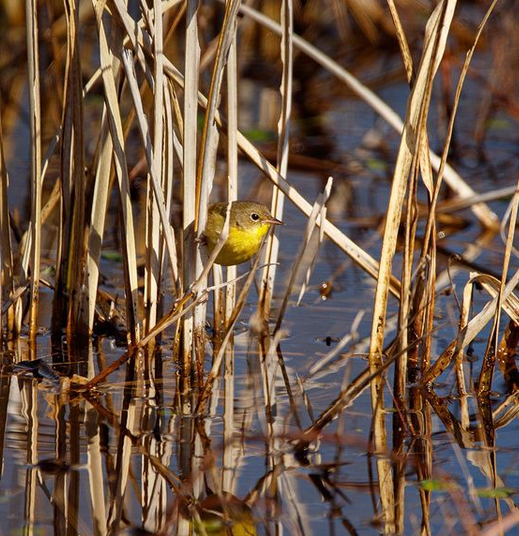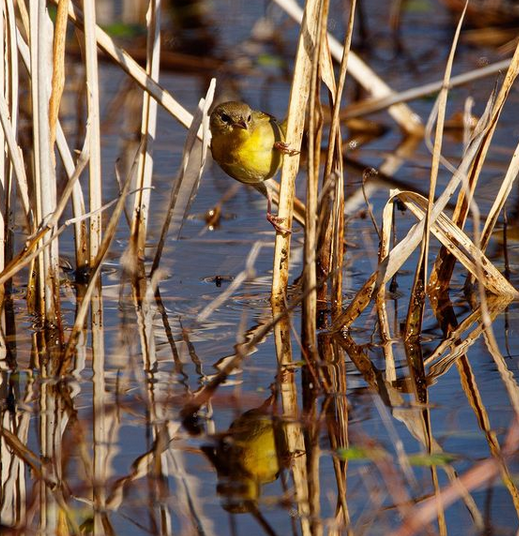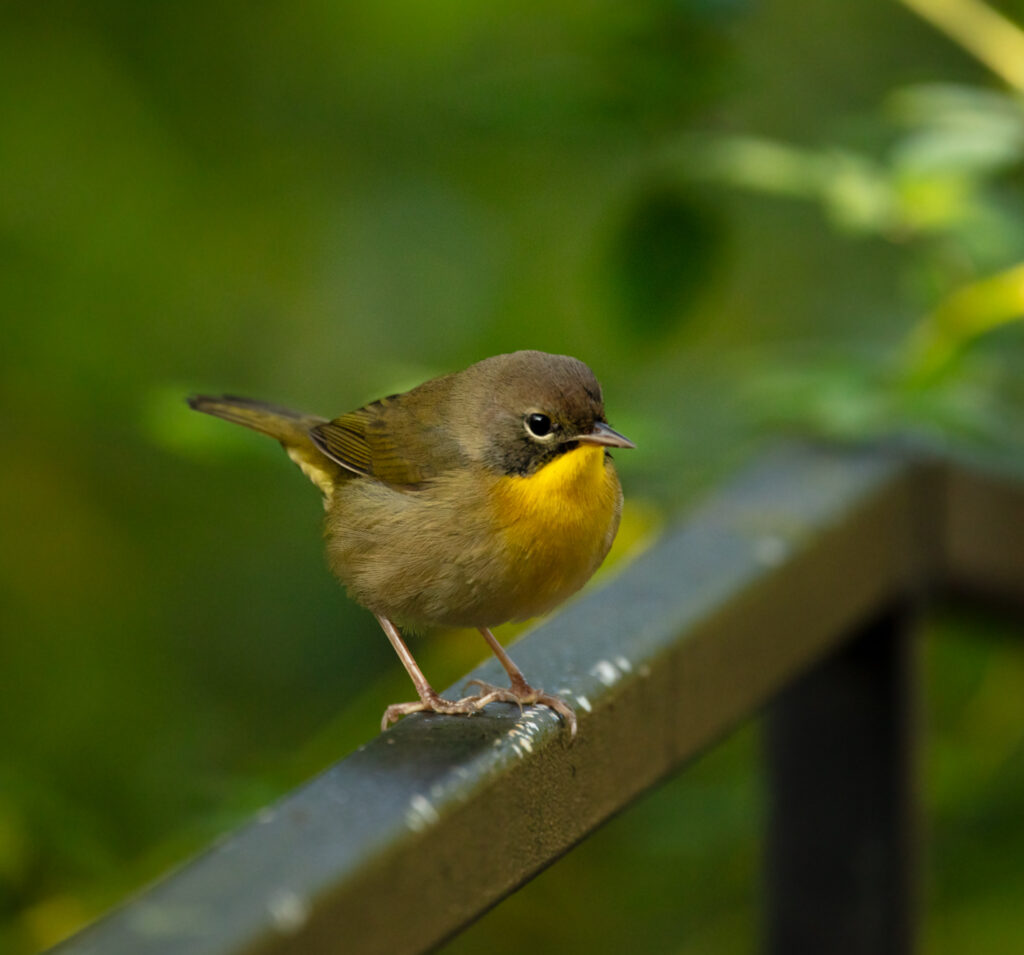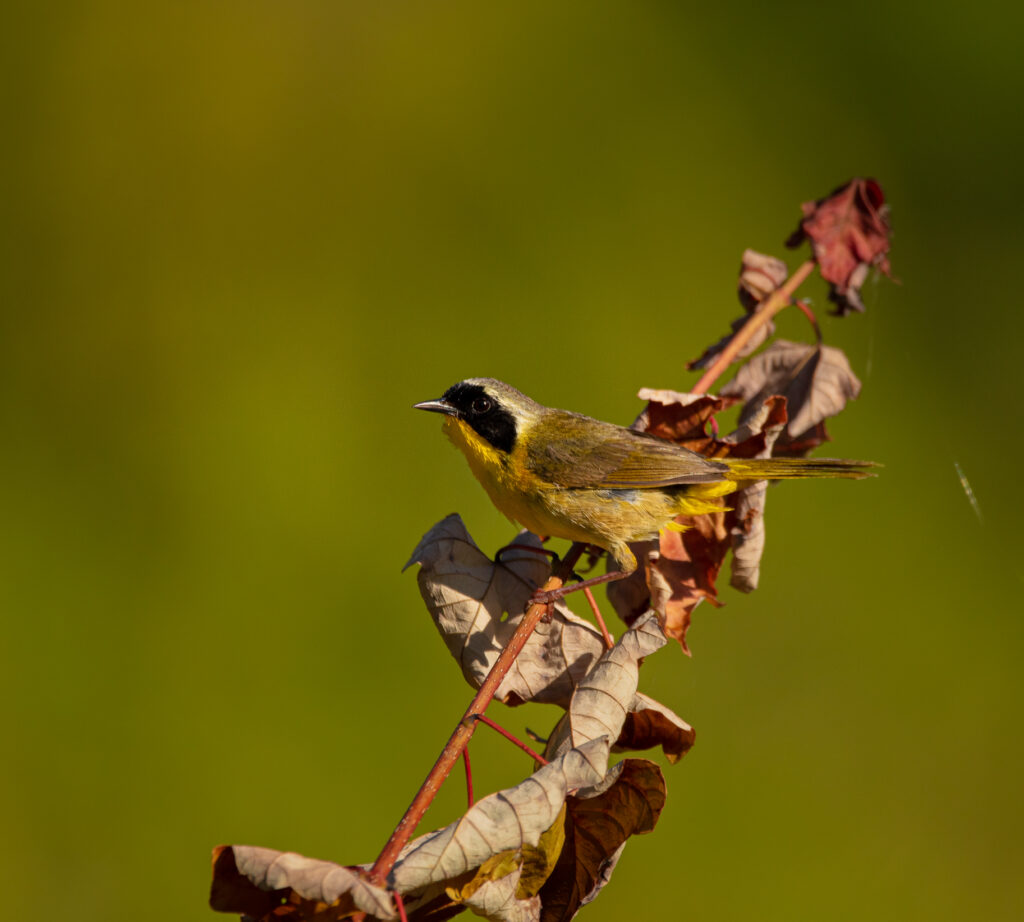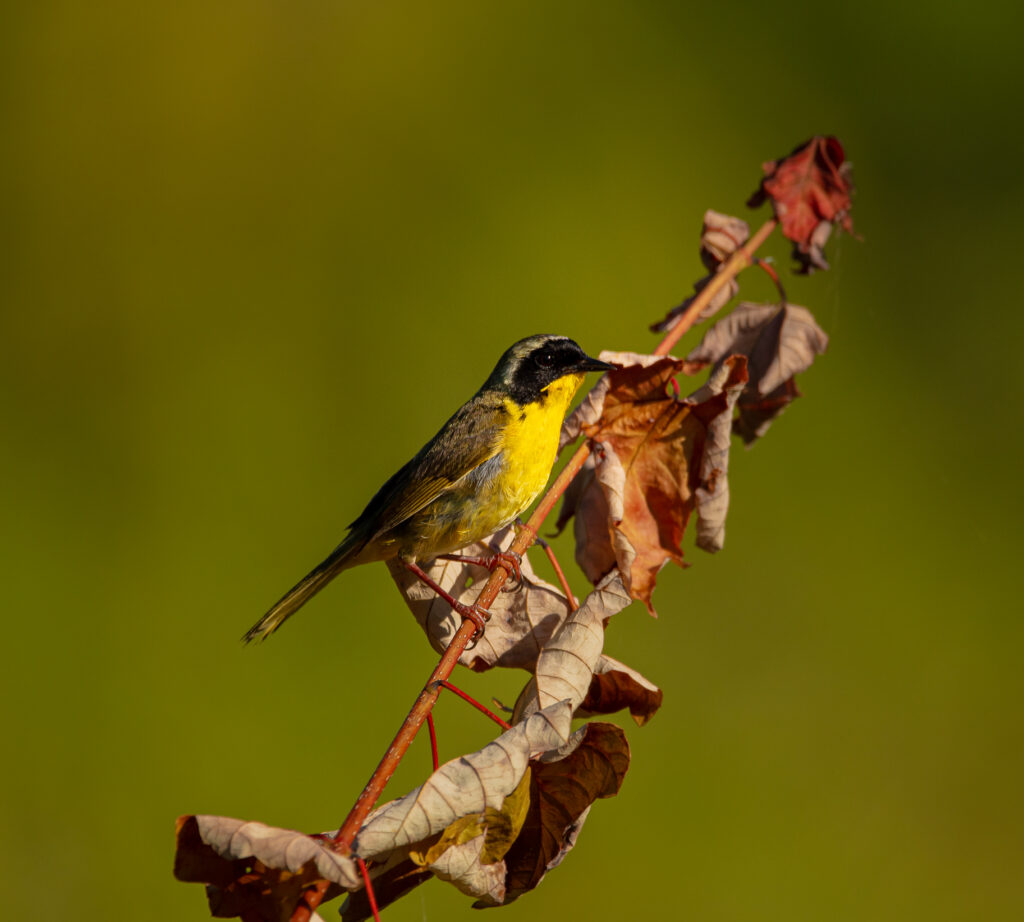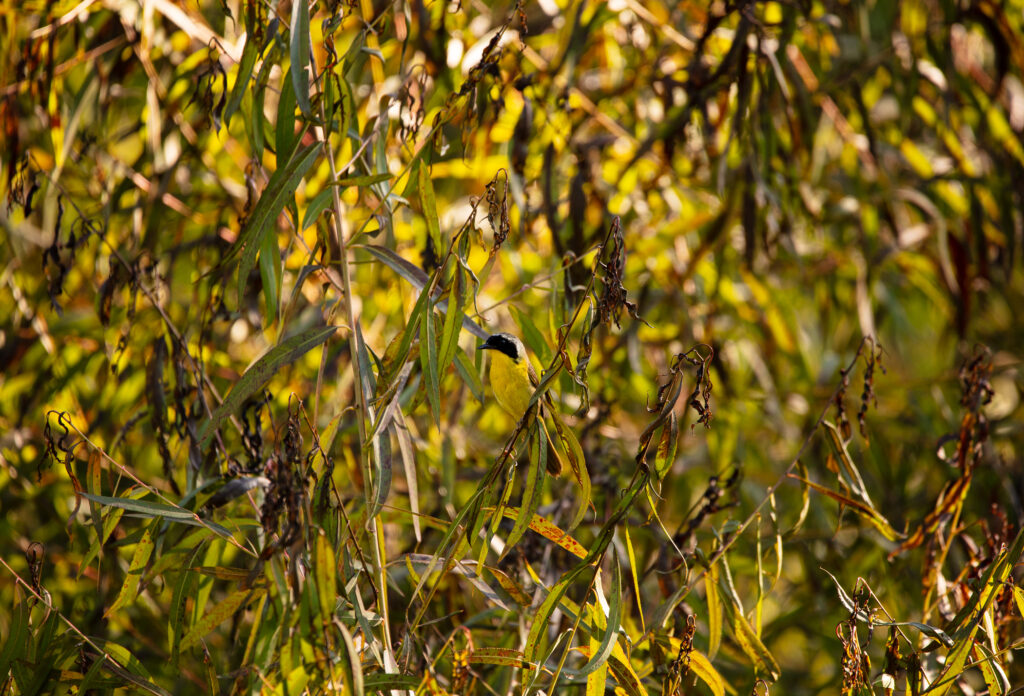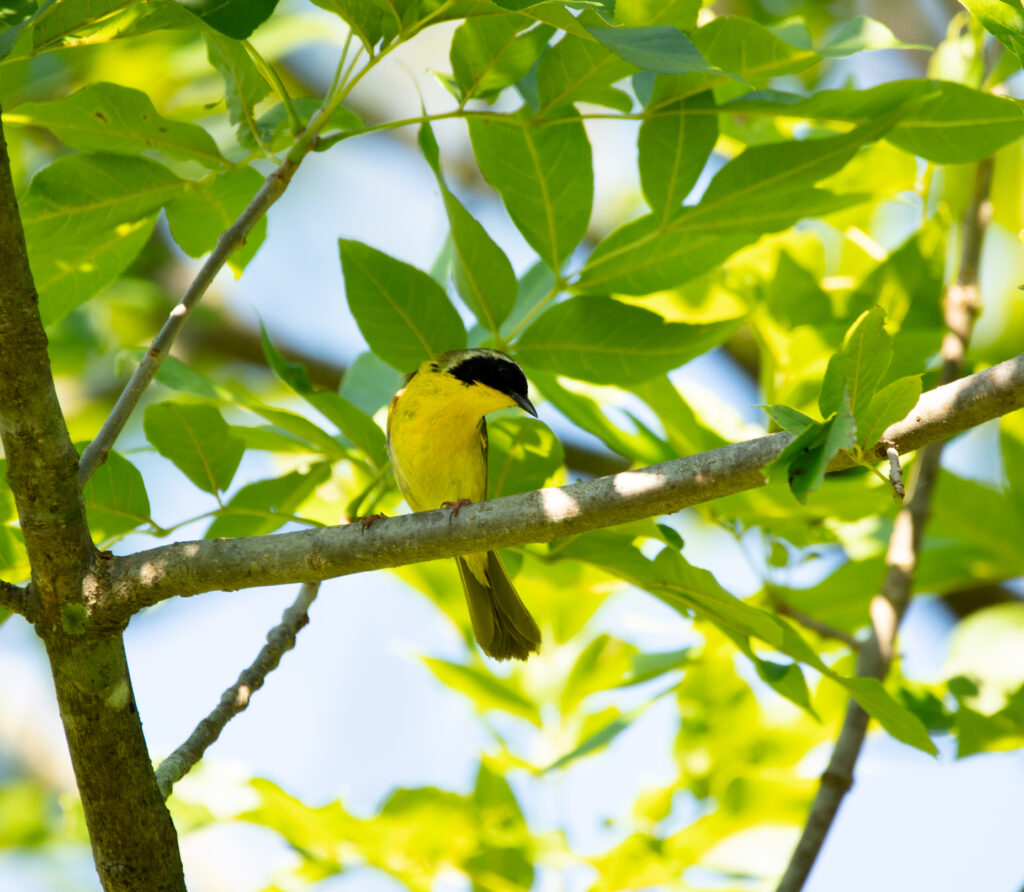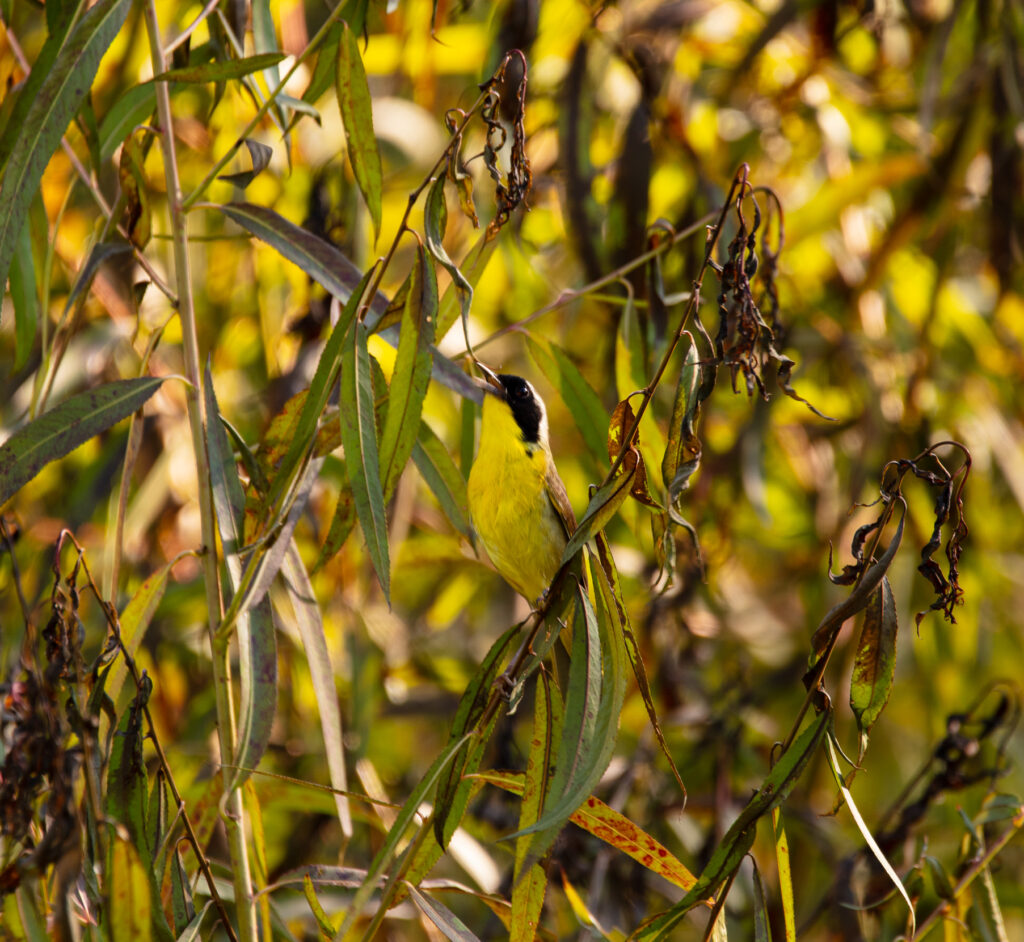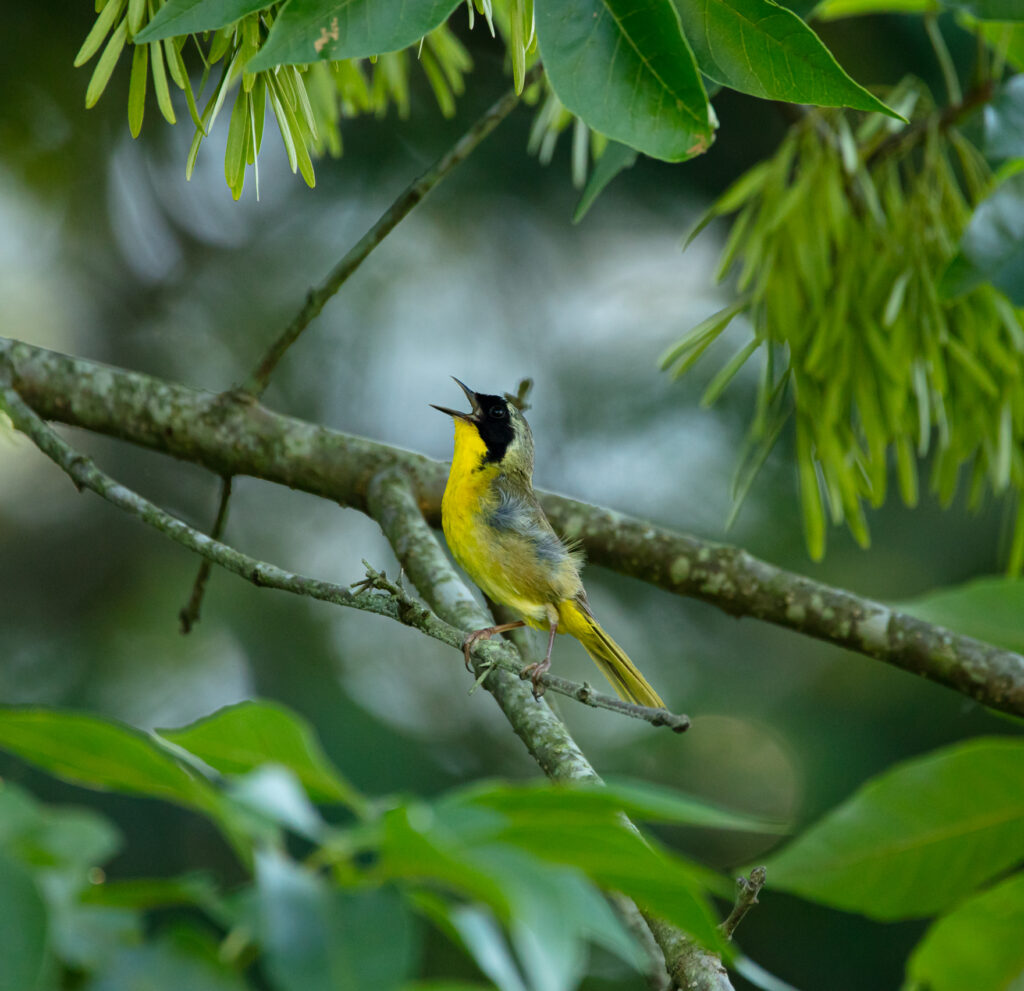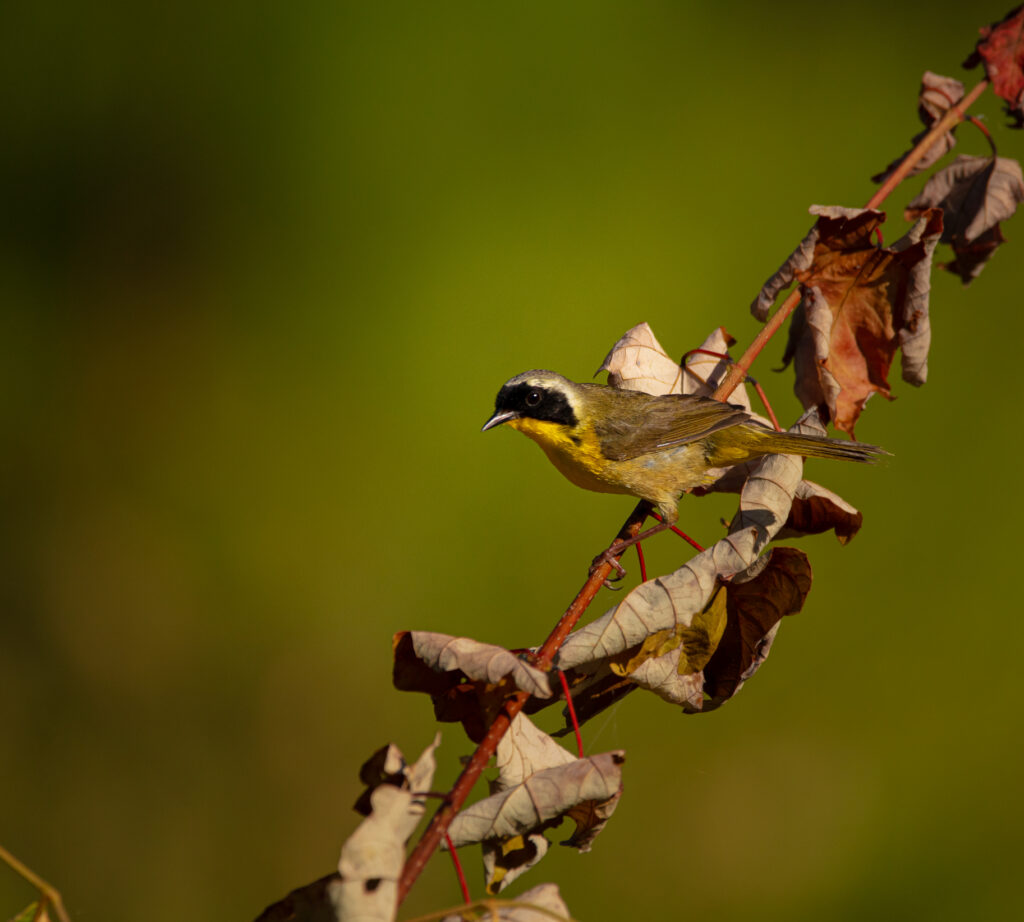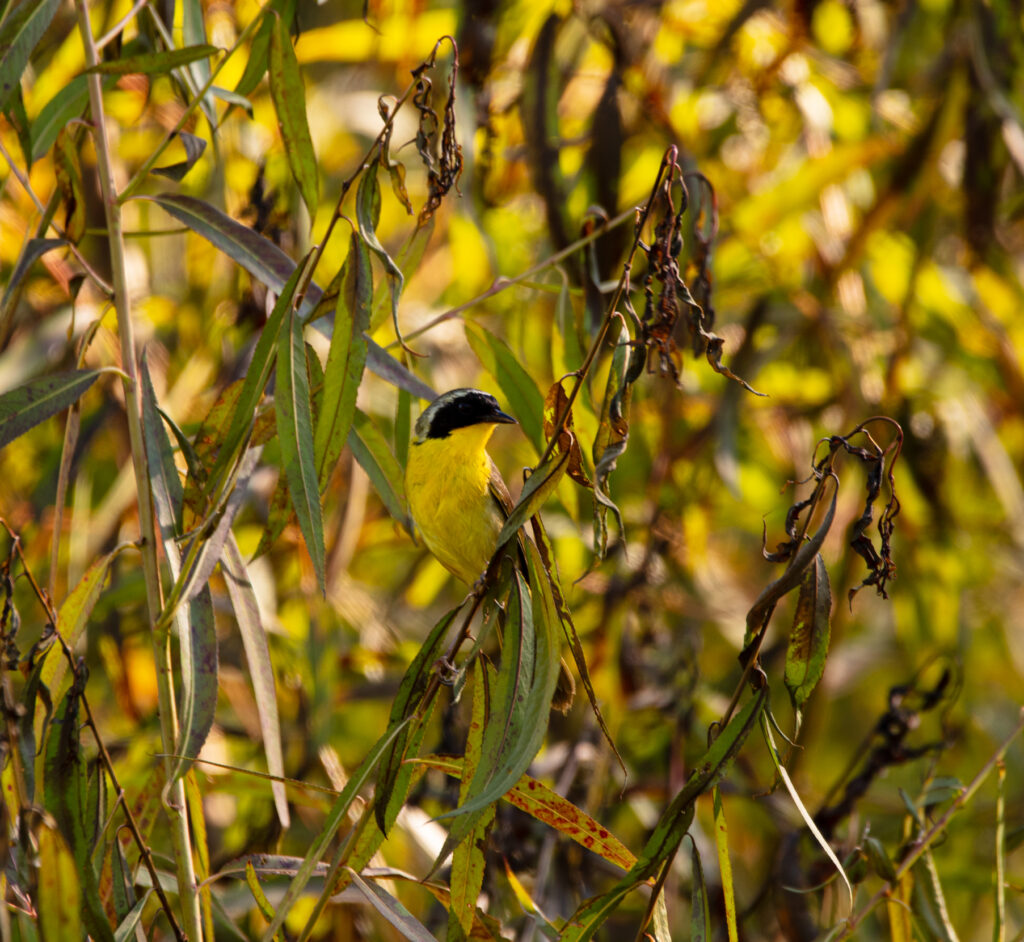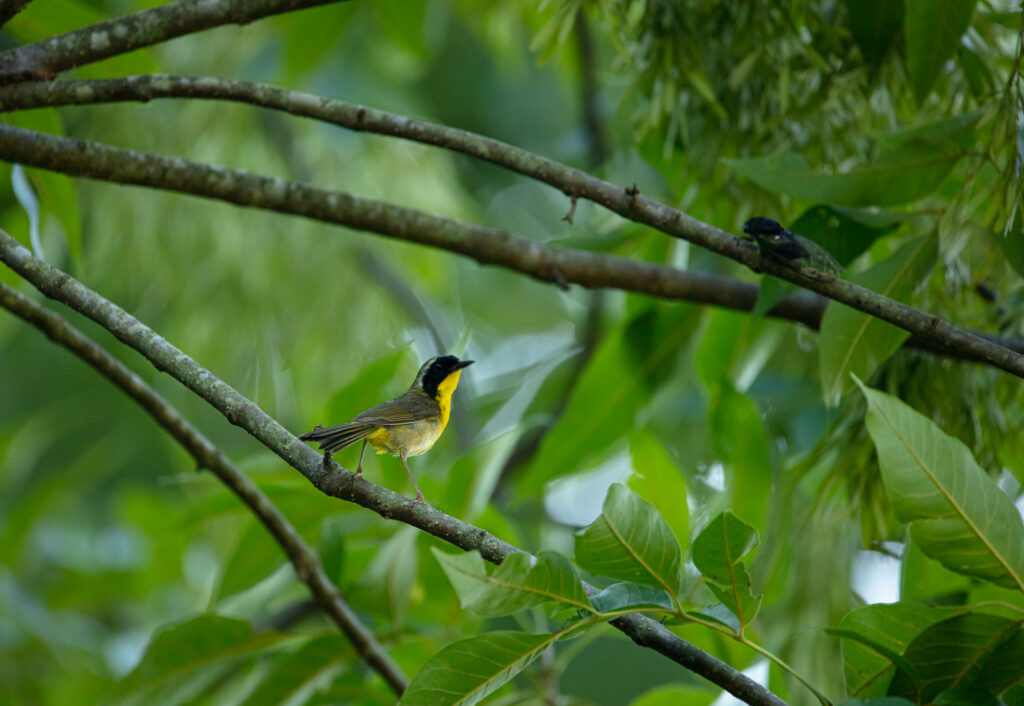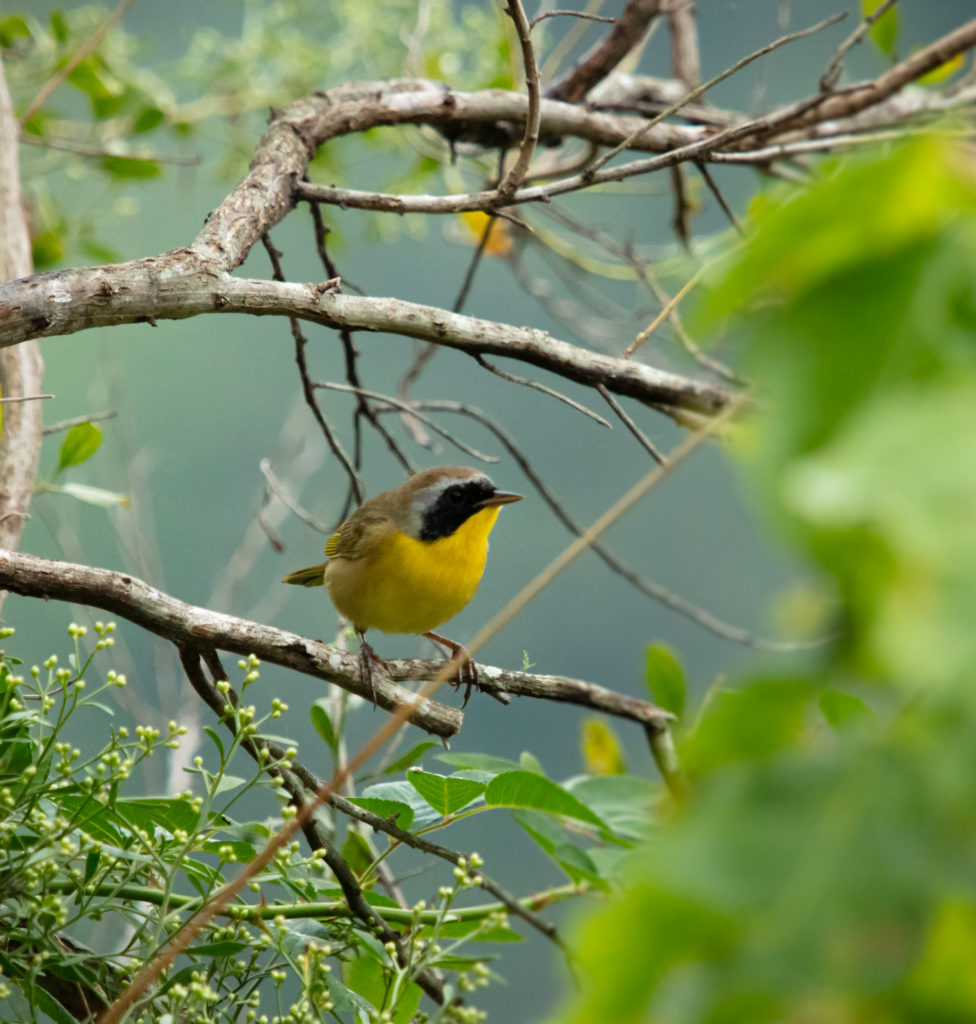One of the sweetest little birds we’ve got flying around here in central NC is the Common Yellowthroat. This tiny species of warbler is certainly a cheerful sight whenever I encounter one singing in the field.
I spotted this male last week near the Old Bynum Bridge in Pittsboro while birding with Corie of @lattaridge
He was quite active, flying from branch to bush stopping only for a few seconds at a time to sing a quick tune.
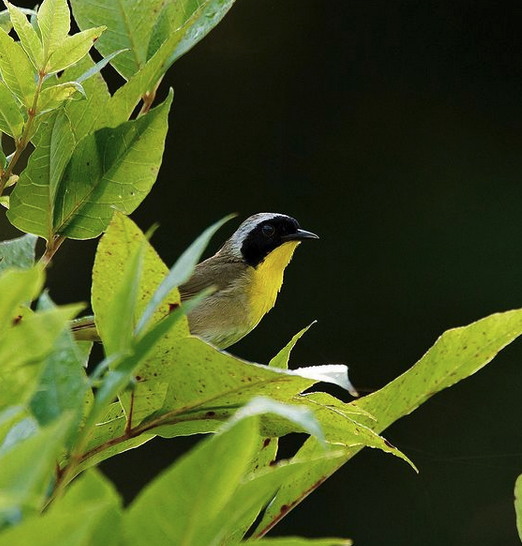
Common Yellowthroats prefer brushy wet habitats located near marshes, ponds and streams. I’ve had the best luck finding them between 2-6ft off of the ground hiding in the undergrowth and hedges along the shoreline.
These spunky birds are one of the most prolific breeding species of warbler in the United States. Their common moniker suits them well as they occur all across the US and up into Canada.

Here in North Carolina, they may be found all year round (although they are more often seen in the summertime) in our coastal eastern counties.
In the Piedmont and mountain regions they are best sighted between March and October.
This means that you still have plenty of time to get outside and enjoy these feathered gems for yourself before the year is done.
Photos by @sally_siko of @birdwatching_nc on the full frame beast of an SLR, the mighty @canonusa
#5Ds




